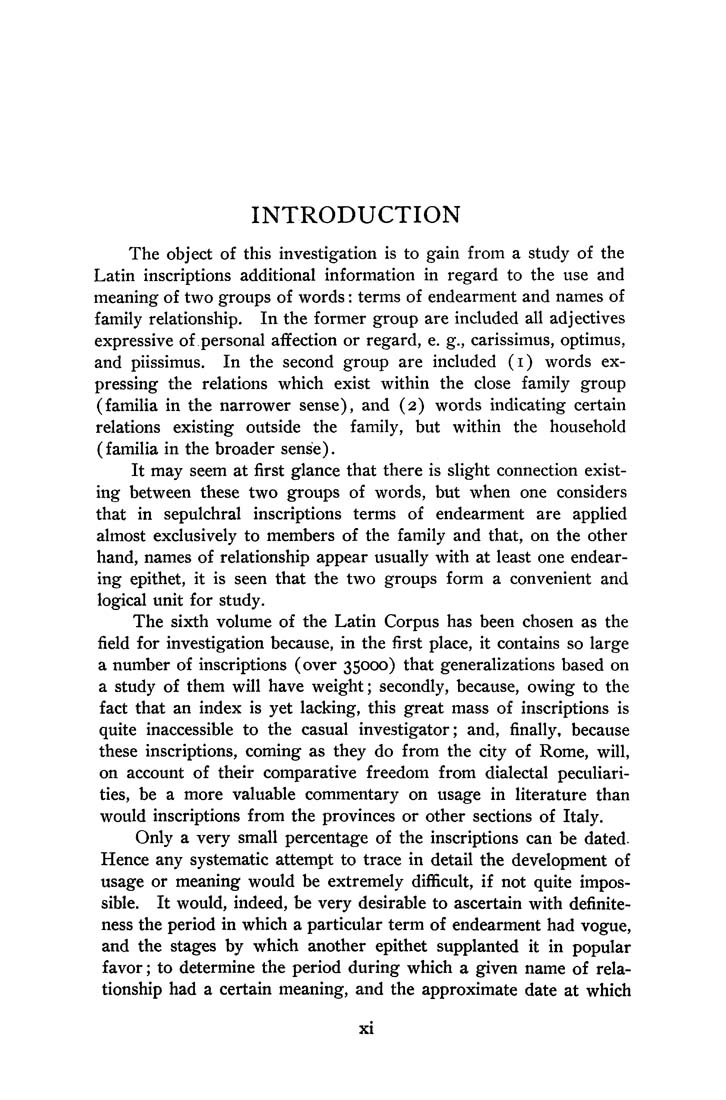introduction
The object of this investigation is to gain from a study of the
Latin inscriptions additional information in regard to the use and
meaning of two groups of words: terms of endearment and names of
family relationship. In the former group are included all adjectives
expressive of personal affection or regard, e. g., carissimus, optimus,
and piissimus. In the second group are included (i) words ex¬
pressing the relations which exist within the close family group
(familia in the narrower sense), and (2) words indicating certain
relations existing outside the family, but within the household
(familia in the broader sense).
It may seem at first glance that there is slight connection exist¬
ing between these two groups of words, but when one considers
that in sepulchral inscriptions terms of endearment are applied
almost exclusively to members of the family and that, on the other
hand, names of relationship appear usually with at least one endear¬
ing epithet, it is seen that the two groups form a convenient and
logical unit for study.
The sixth volume of the Latin Corpus has been chosen as the
field for investigation because, in the first place, it contains so large
a number of inscriptions (over 35000) that generalizations based on
a study of them will have weight; secondly, because, owing to the
fact that an index is yet lacking, this great mass of inscriptions is
quite inaccessible to the casual investigator; and, finally, because
these inscriptions, coming as they do from the city of Rome, will,
on account of their comparative freedom from dialectal peculiari¬
ties, be a more valuable commentary on usage in literature than
would inscriptions from the provinces or other sections of Italy.
Only a very small percentage of the inscriptions can be dated.
Hence any systematic attempt to trace in detail the development of
usage or meaning would be extremely difficult, if not quite impos¬
sible. It would, indeed, be very desirable to ascertain with definite-
ness the period in which a particular term of endearment had vogue,
and the stages by which another epithet supplanted it in popular
favor; to determine the period during which a given name of rela¬
tionship had a certain meaning, and the approximate date at which
xi
|








